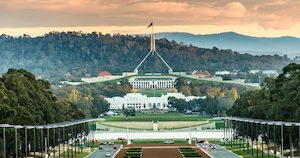Australian labour market – recovery continues but storm clouds on the immediate horizon
The latest data from the Australian Bureau of Statistics – Labour Force, Australia, March 2021 – released today (April 15, 2021), shows that the Australian labour market continues to recover – and while the recovery had stalled a bit over the latter part of 2020, the March result builds on the strong February result. Employment increased by 0.5 per cent (70,700) in the month and unemployment fell by 27,100 to 778,100 persons. As a result the unemployment rate fell by 0.2 points to 5.6 per cent, even though participation rose by 0.2 points. Overall, a good outcome. The main uncertainty now is that the recovery to this point has been dependent on government fiscal support, which ended in March 2021. Given the labour market is still quite a margin from where it was in March 2020, the idea that the government would withdraw its fiscal support is not a compelling option. We will see the first results of the fiscal withdrawal in the next month’s data and I expect things to not look as rosy as they are this month. Further, undertainty has now entered the equation as a result of the vaccination bungling by the federal government. We will see how that plays out in the coming months. Overall, the recovery is still too slow and more government support by way of large-scale job creation is needed.
